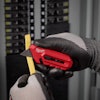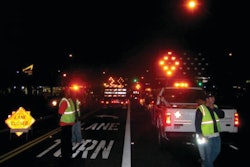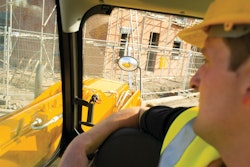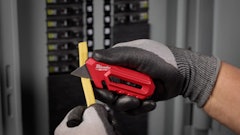When compliance of the Federal Highway Administration's Mandate 23 - CFR Part 634: Worker Visibility - is enforced in November 2008, all workers within the right-of-way of a Federal-aid Highway who are exposed either to traffic or construction equipment within the work area will be required to wear high-visibility safety apparel that meets the Performance Class 2 or 3 requirements of the American National Standard for High Visibility Apparel (ANSI/ISEA 107-2004). Simply put, FHWA is emphasizing the need to be seen as a critical issue for worker safety.
If safety isn't at the top of your daily toolbox talk, it should be. There are approximately 700,000 roadway workers in the United States. According to the National Highway Traffic Safety Administration, there were a total of 1,074 fatalities in 2005 that were a result of motor vehicle traffic accidents in construction and maintenance zones. In a recent report to Congress, NHTSA made direct correlation between workers or others within a work zone being struck by a vehicle as a result of low visibility. The report recommended that all roadway workers, emergency responders, law enforcement and motorists outside their vehicles along a roadway wear high-visibility safety apparel.
High-visibility safety solutions will be needed to satisfy both the regulations and the specific needs of workers engaged in daytime, low-light and nighttime environments. At a recent press conference, Gary Pearson, marketing manager for 3M's Visibility and Insulation Solutions business, said business owners can assess their worker needs by referring to Appendix B of ANSI/ISEA 107-2004 for performance class selection guidelines per work zone conditions (www.safetyequipment.org/hivisstd.htm).
According to Pearson, the key to compliance, as well as addressing the safety concerns of your workers, is to provide high-visibility apparel that your workers will wear. Workers will wear safety apparel that's comfortable and cool in the summer and warm in the winter. But if it doesn't fit, or it's too bulky, or it simply is not designed to meet the temperature conditions, workers are more inclined to shed the garment.
According to a 2002 report by the American Economic Group, if the public and private sector allocated annual expenditures of at least $3 billion for a range of 32 safety improvements, including outfitting all roadway workers with high-visibility safety apparel, 66 roadside fatalities and 5,000 roadside accidents could be avoided each year. For every dollar spent on high-visibility safety apparel, five dollars in accident costs may be avoided.
Compliance with the new high-visibility safety apparel standards is the bottom line for contractors and others working in federally-funded highway construction zones. But regardless of what the new standards require, all contractors should want to equip their workers with whatever is necessary to protect their safety.



















